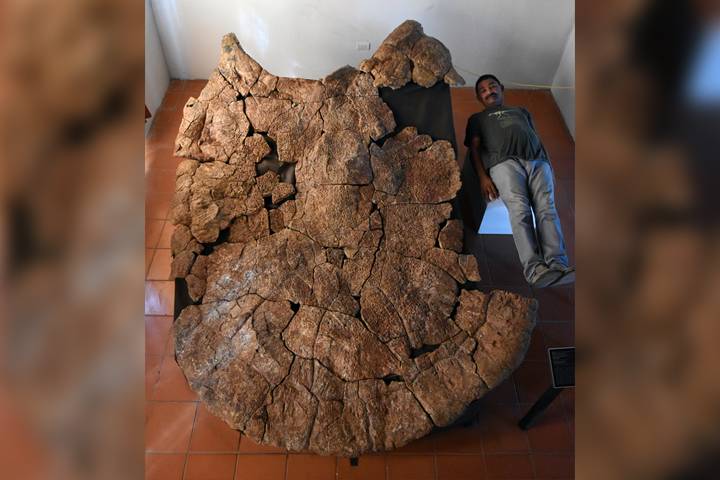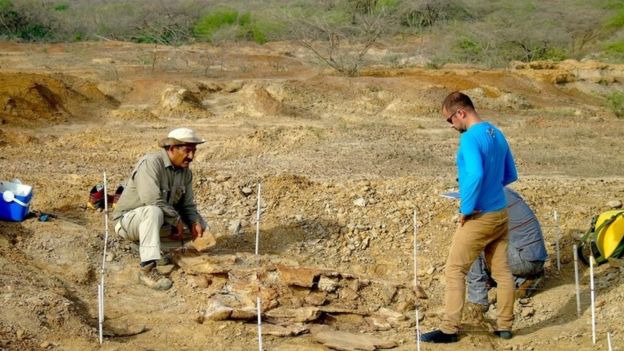Turtle fossil the size of a car unearthed shows signs of ancient croc battle
Turtle fossil the size of a car unearthed, shows signs of ancient croc battle Fossils of a turtle the size of a car have been unearthed in what is now northern South America.
The turtle – Stupendemys geographicus – is believed to have roamed the region between 13 and 7 million years ago. The fossils were found in Colombia’s Tatacoa Desert and Venezuela’s Urumaco region.
Researchers say they’ve unearthed several fossils from Stupendemys geographicus, a massive freshwater turtle that grew up to four metres (13 feet) long and weighed more than one metric tonne.
The fossilized remains include the largest shell ever recovered and the first piece ever found from the turtle’s lower jaw, according to a paper published in the journal Science Advances.
“Stupendemys geographicus was huge and heavy. The largest individuals of this species were about the size and length of a sedan automobile if we take into account the head, neck, shell, and limbs,” said Edwin Cadena, a paleontologist and lead author of the study.

The fossils also reveal that males of the species had large horns built into the front of their shells, which are thought to have been used for fighting with other males and fending off larger foes. Females did not have those same horns, according to Marcelo Sanchez, a paleobiologist who led the project at the University of Zurich’s Paleontological Institute and Museum.
“The two shell types indicate that two sexes of Stupendemys existed — males with horned shells and females with hornless shells,” Sanchez said in a news release from the university.
Modern male turtles have also been known to fight with one another, although they lack the shell-mounted weapons of their ancestors.
The stupendous turtle was massive by modern standards, but not when compared to some of the gigantic crocodile ancestors that occupied the same prehistoric swamps of its era. Among those prehistoric predators was the caiman Purussaurus, which measured 11 metres (36 feet) long, and the slightly smaller Gryposuchus, which was 10 metres (33 feet) long.
Fossil evidence shows the turtles definitely tangled with crocodilian predators from time to time, as one of the battle-scarred male shells had a five-centimetre (two-inch) tooth embedded in it.

The new fossils were found in the Tatacoa desert of Colombia and the Urumaco region of Venezuela. The specimens include the largest-ever recovered shell fossil, which measures 2.86 meters (9.4 feet) long.
Paleontologists have known about the turtle’s existence since the 1970s, but they haven’t found enough specimens yet to build a full profile of its behaviours.
The newly recovered jaw pieces are expected to shed some light on what the turtle ate, Cadena said.
“Its diet was diverse including small animals — fishes, caimans, snakes — as well as mollusks and vegetation, particularly fruits and seeds,” he told Reuters. “Putting together all the anatomical features of this species indicates that its lifestyle was mostly in the bottom of large freshwater bodies including lakes and rivers.”
Only one turtle in history was thought to be larger: the Archelon, an ocean-dwelling behemoth that measured 4.6 meters (15 feet) long and lived nearly 70 million years ago. Paleontologists don’t know if these turtles were biters — but with their car-sized bodies, one probably wouldn’t want to find out.





